While in Pawleys Island recently, I played the Heritage Club (ranked in the top 50 by GD on the Top 100 Public list this year) one afternoon. The three defining characteristics of the golf course, as you'll see from the pictures, are broad live oak trees, nasty-looking bunkers, and enormous greens. Those greens have quite a bit of undulation, separating them often into two or three greens in one. This allows holes to play quite differently from day to day. I listed Strantz in parentheses in the title because I am told he had a lot to do with the original green complexes, which were softened somewhat. At any rate, I have heard the architectural history is somewhat spotty at Heritage, so if anyone has more information, I'd love to hear/see it.
Anyhoo, the narrowness of Heritage is evident immediately; if you play the tips, you'd better be able to work the ball both ways.
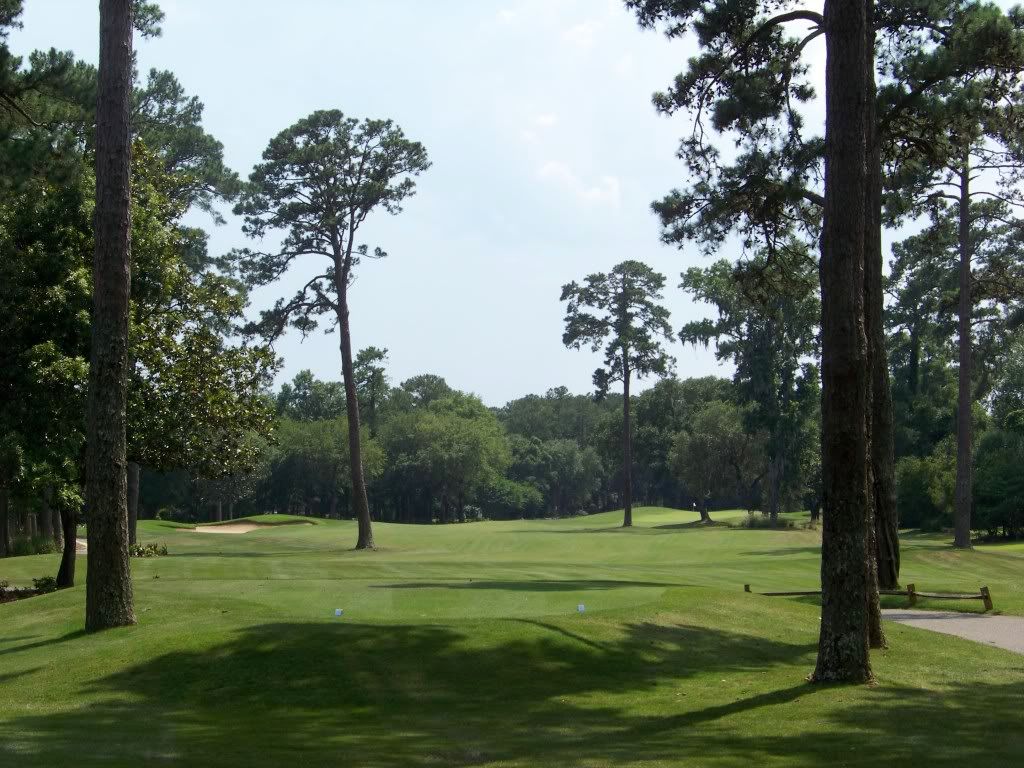
As is often the case, there is one clear side to miss on the greens at Heritage, making up for the penal nature of the bunkers.
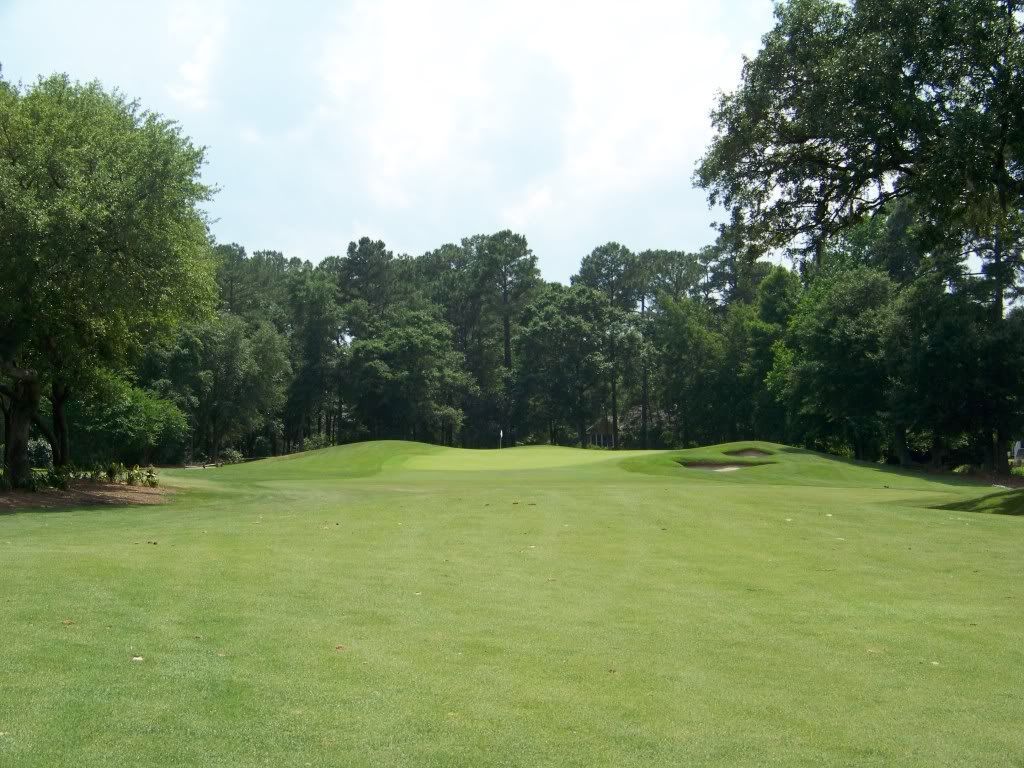
Number 2 is a lengthy par 5 where one might want to layup down a wider right-hand fairway for a better angle up the green. The left fairway provides the shorter way home.
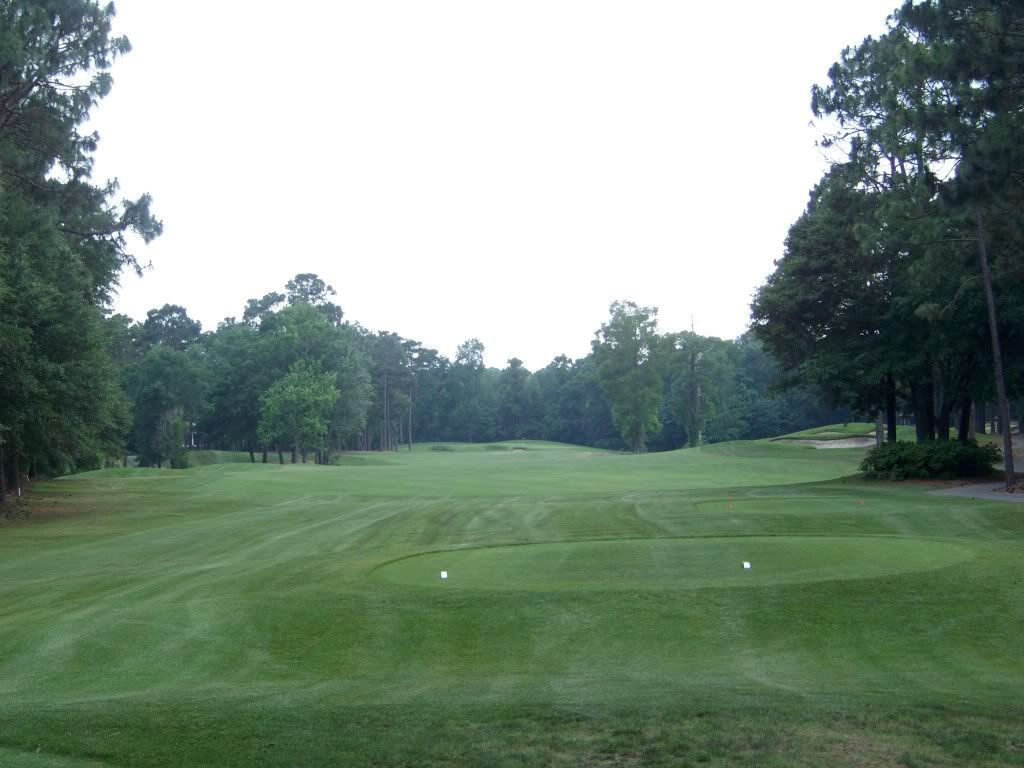

3 is a pretty stout par 4 with bunkers to the left of the landing area. Challenging these bunkers leaves an easier angle for the second shot and shortens the hole a little.
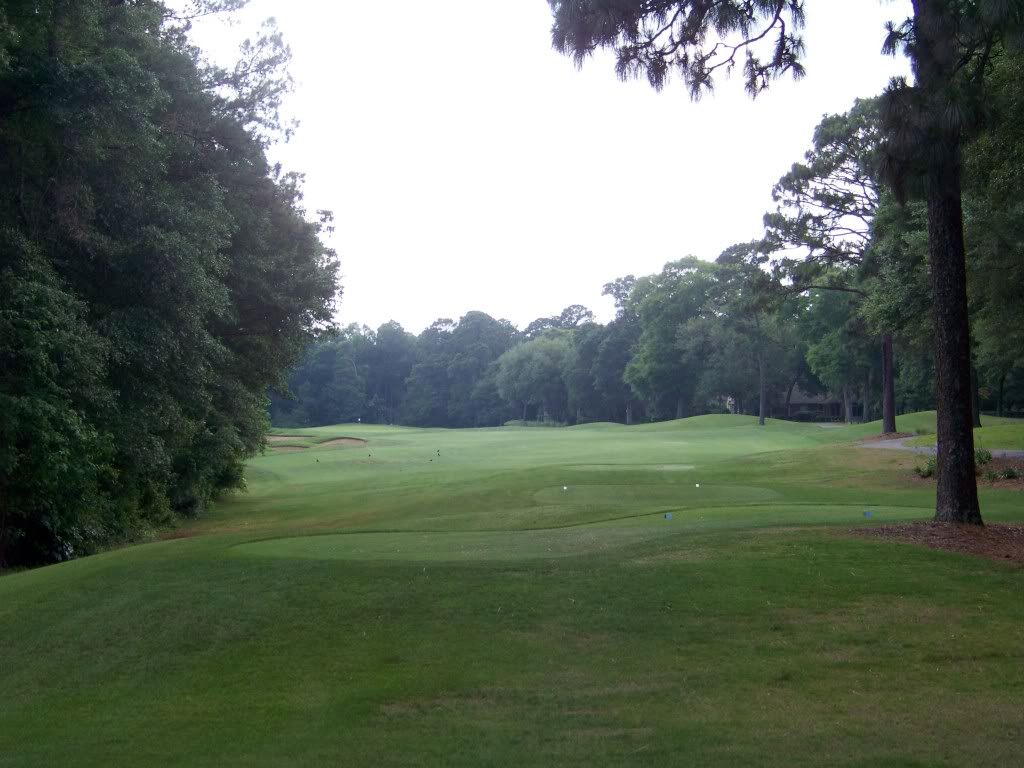
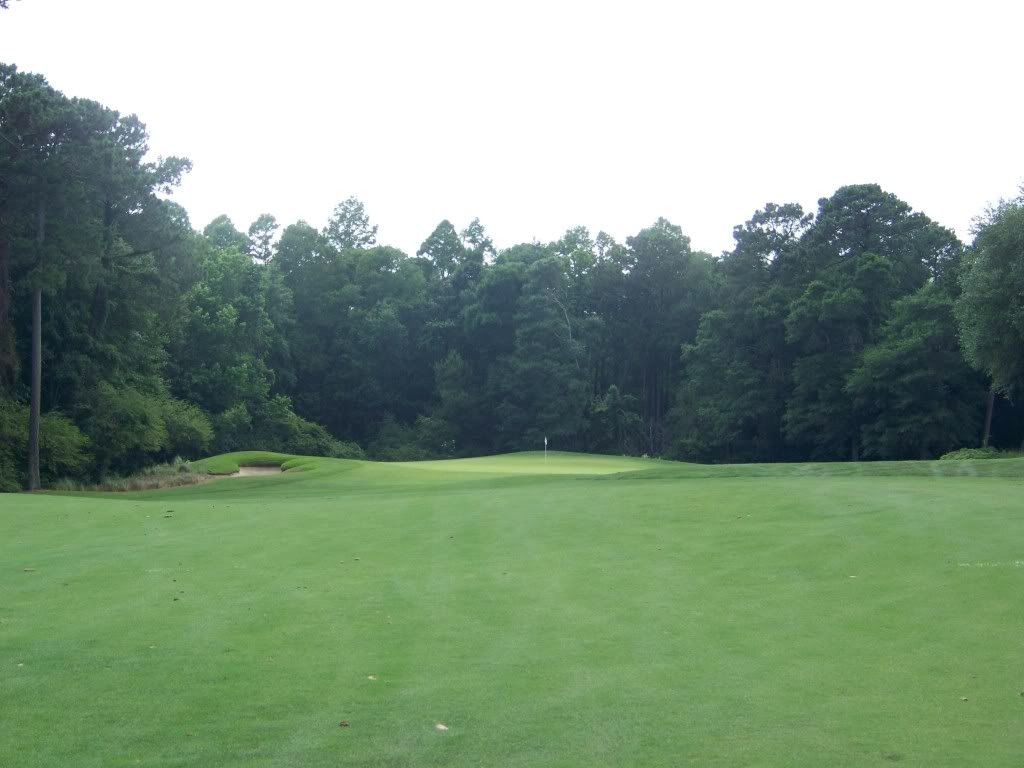
Number 4 is another dogleg-left par 4 where two live oaks really pinch in the landing area. But if you can avoid them, the approach is to a fairly inviting, if undulating green.
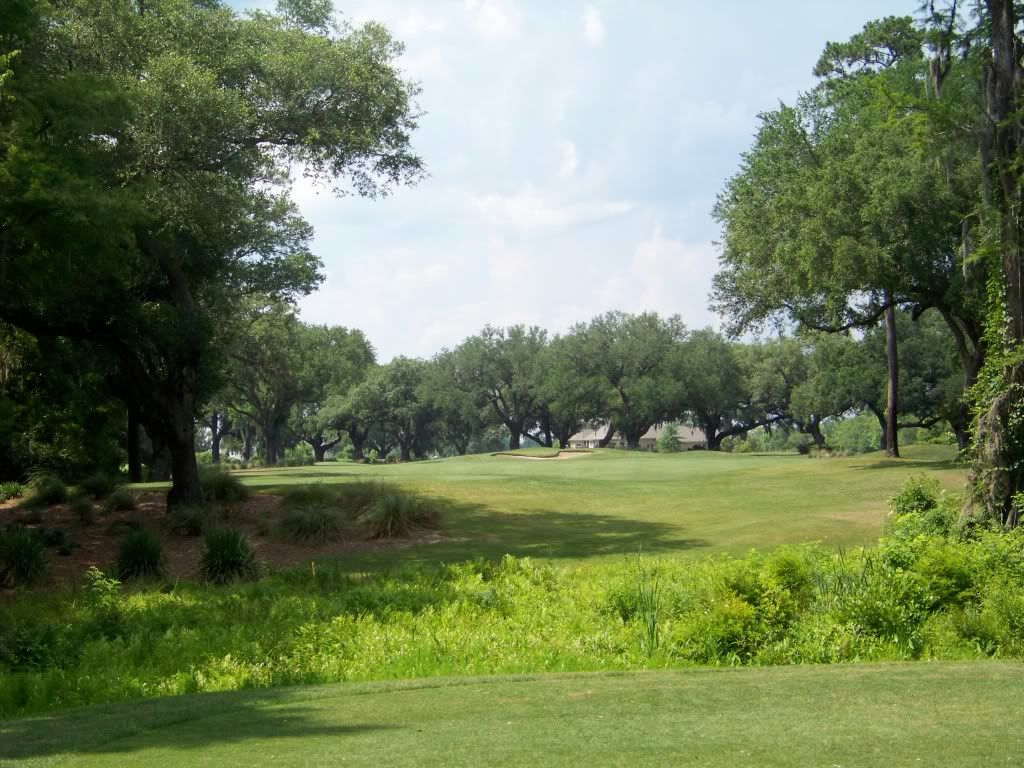
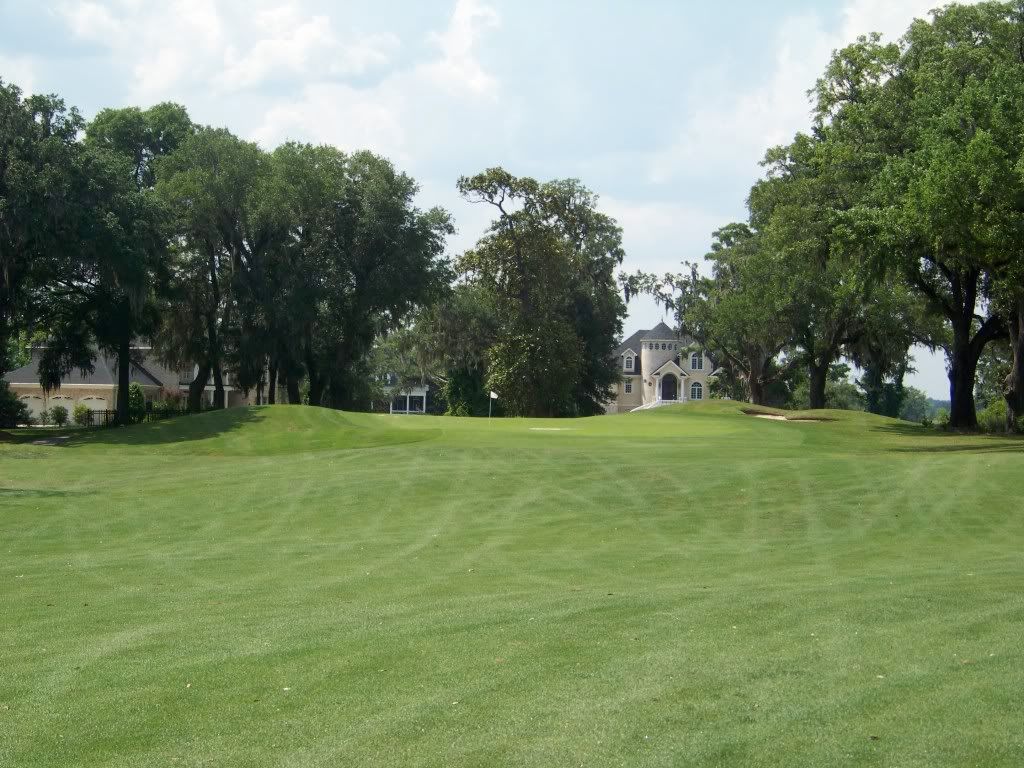
The 5th again tempts the aggressive player to bust one over bunkers at the inside of the dogleg to leave a wedge into the green. It's one of the easier holes if you can hit a good drive. The green meanders behind that left bunker in the second picture.
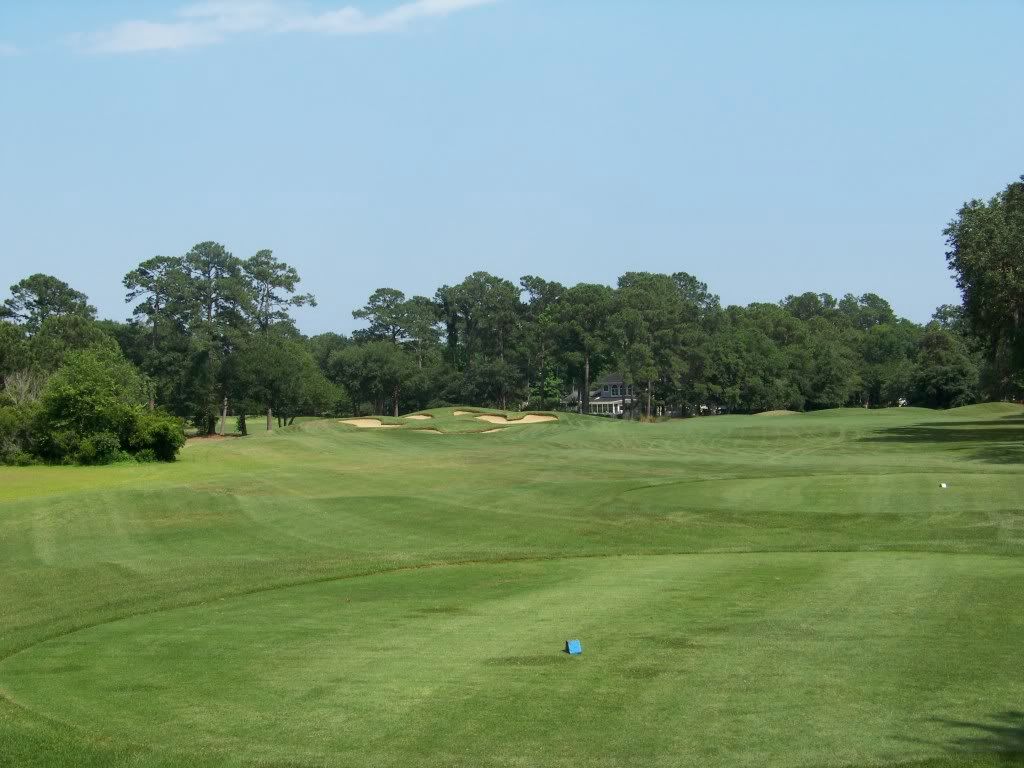
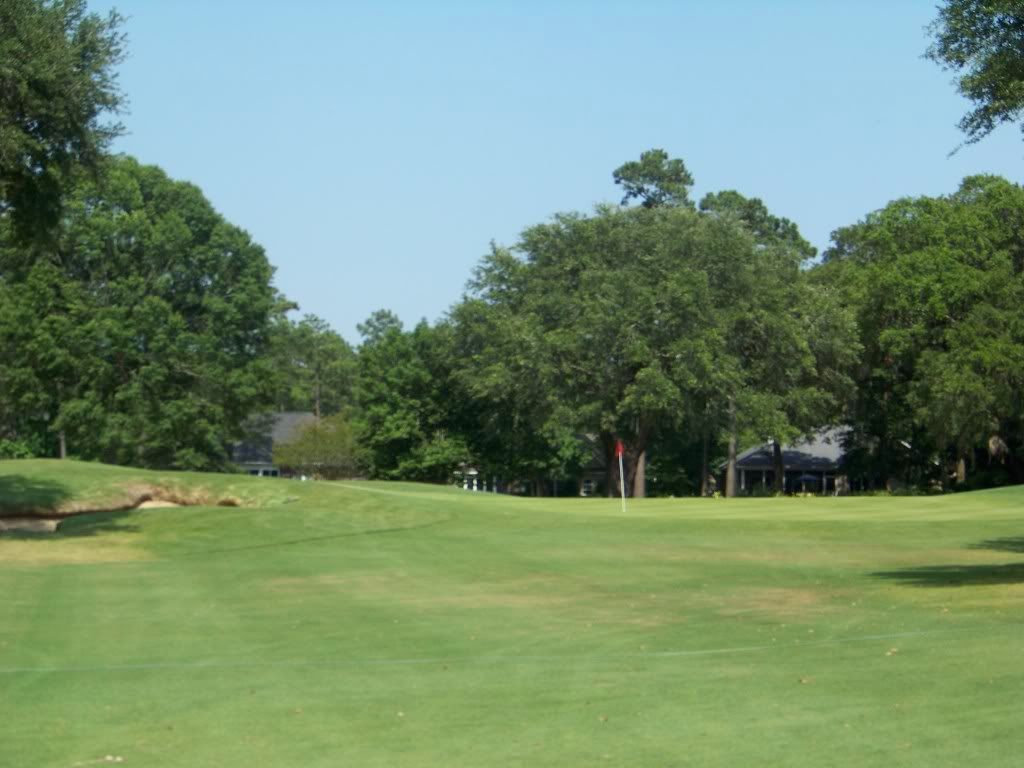
The first par 3 is to be found at number 6, which may require as much as a hybrid or as little as a 7 iron or so, as the green is about 50 yards deep.
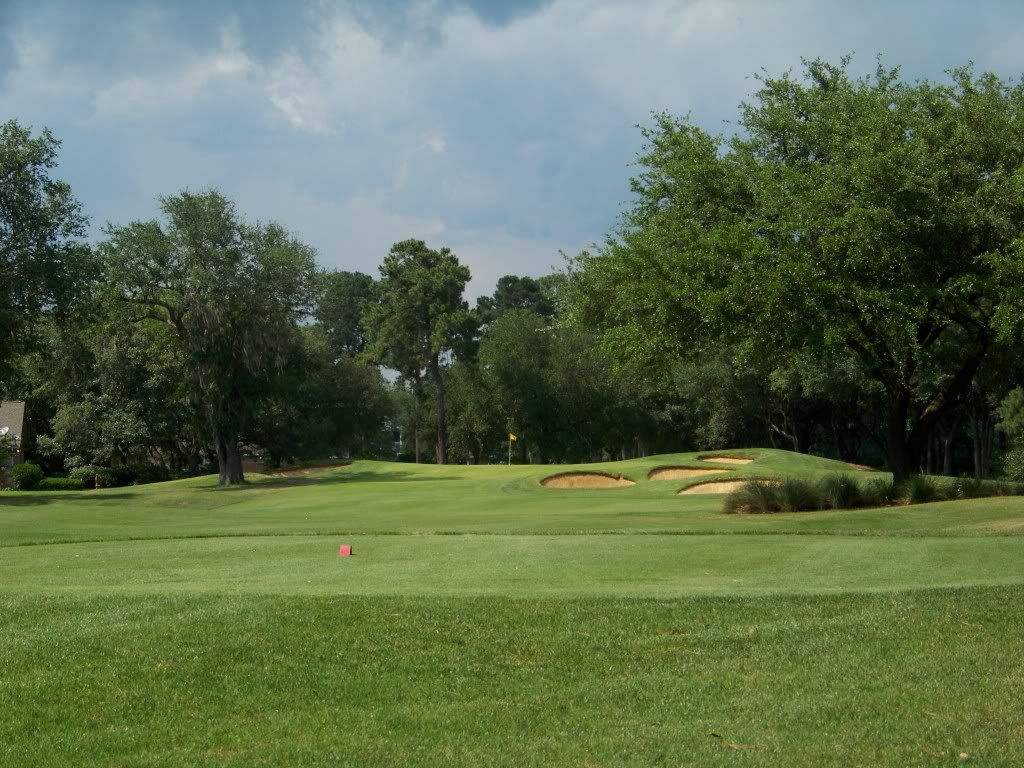
The 7th is a par four that requires an all-or-nothing approach if the player wants to shorten the hole off the tee. It is possible to hit a drive through the fairway if you don't try and cut off enough over the right side, so either play short and right of the far left bunker or aim your drive about 15 yards right of the right bunker on the inside of the dogleg.
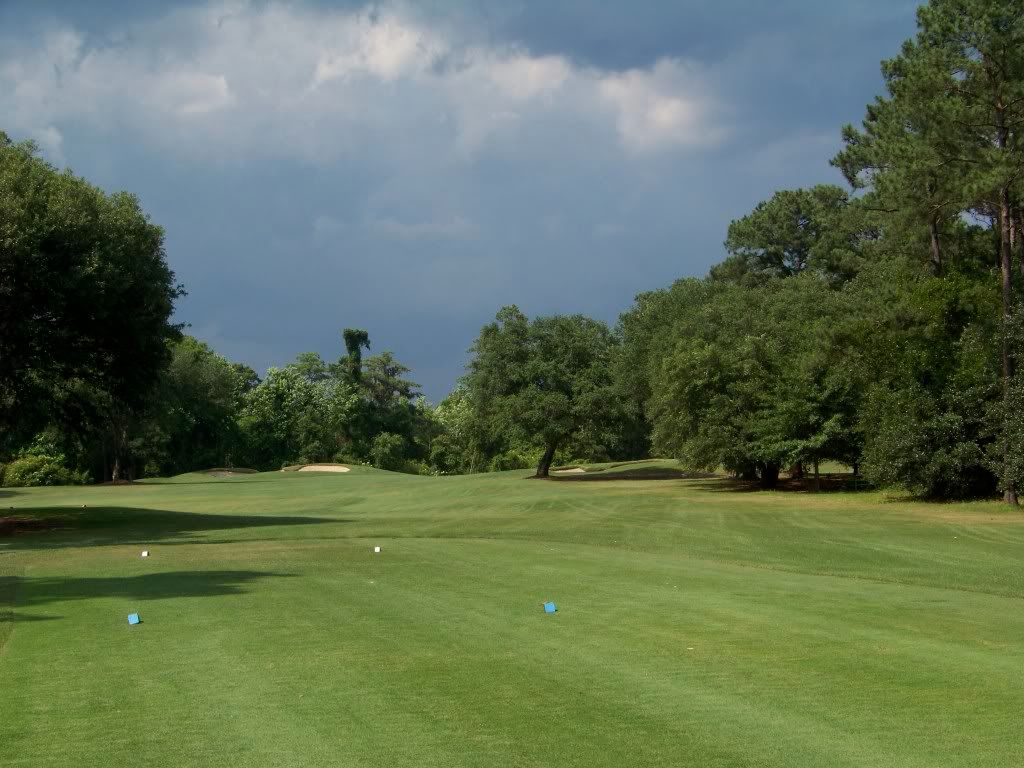
This is the view from a little left of the ideal spot off the tee.
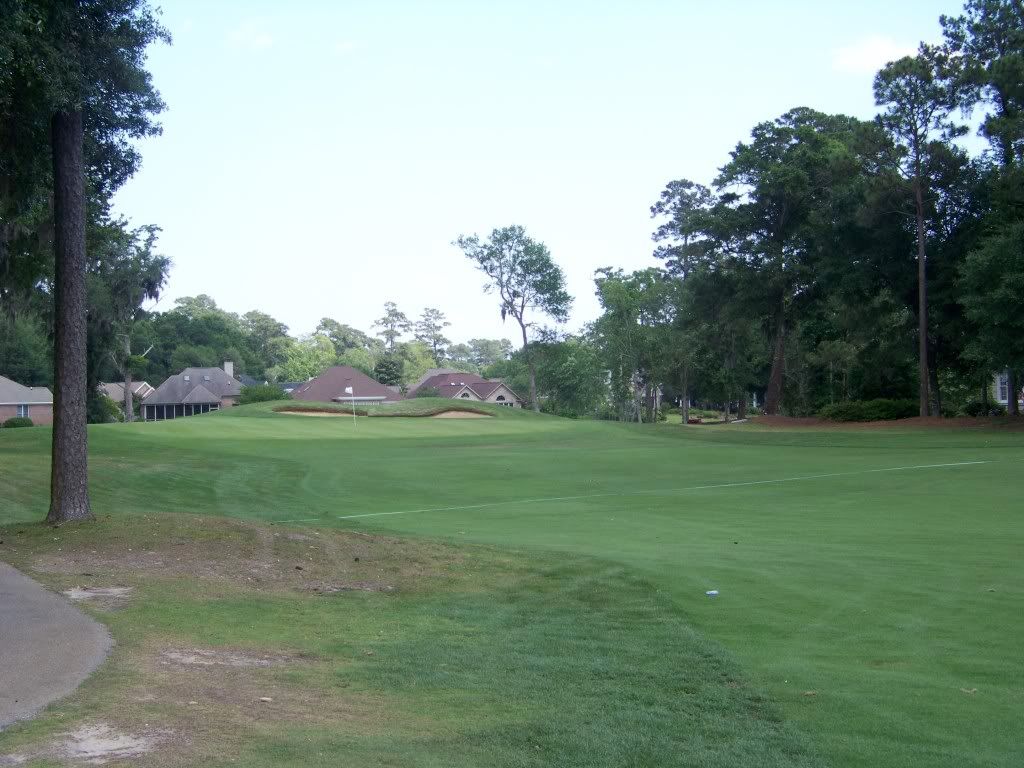
The 8th is the shortest hole at Heritage, at only 155 from the tips. There is the remains of an old slave cemetery just in front of the tee box, so you could say the hole is "built over the bones of dead men." The green wanders behind that little right-side bunker and drops a couple feet, making a pin back there tough to see clearly.
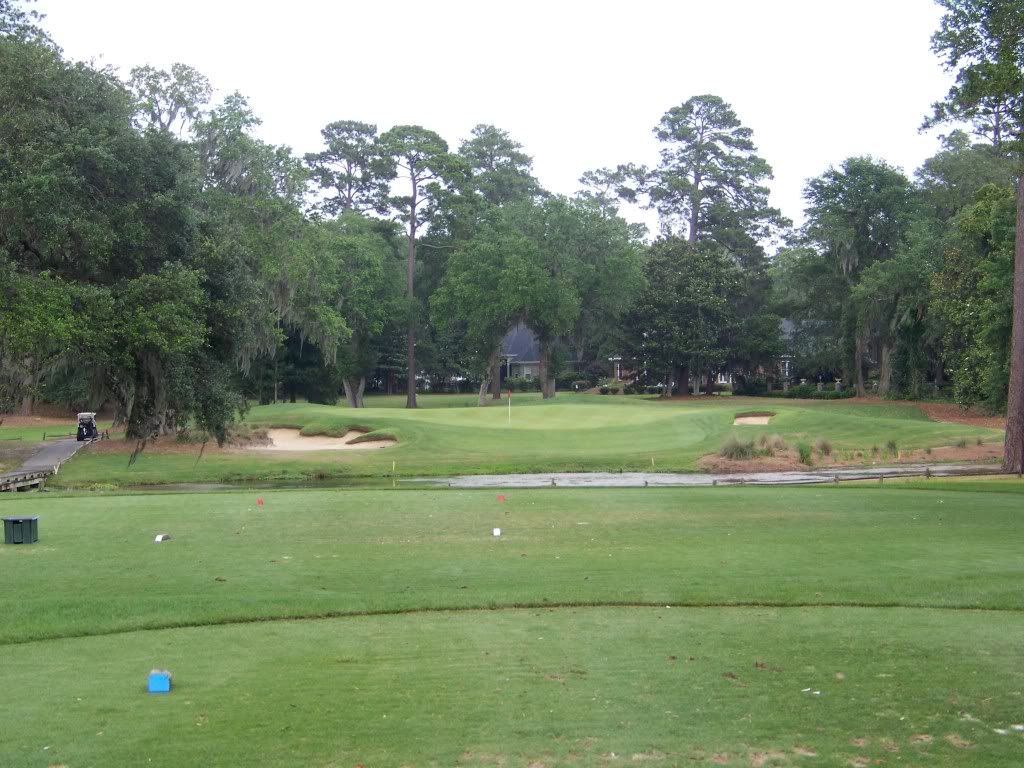
The last hole on the front is a bit shoehorned. There's no need to hit more than a 5 wood or hybrid off the tee as it will leave you with a wedge into the green.

The back opens with a pretty narrow par five. A drive anywhere left of the right few yards of the fairway will force a careful layup in order to have a look at the huge, three-level green.
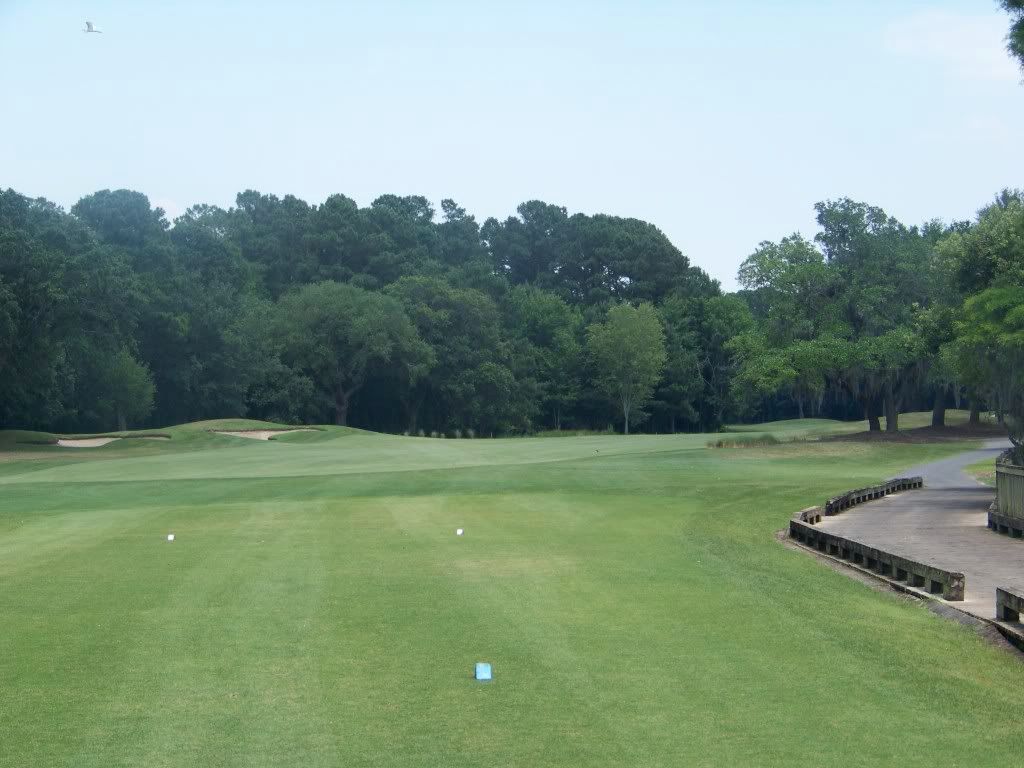
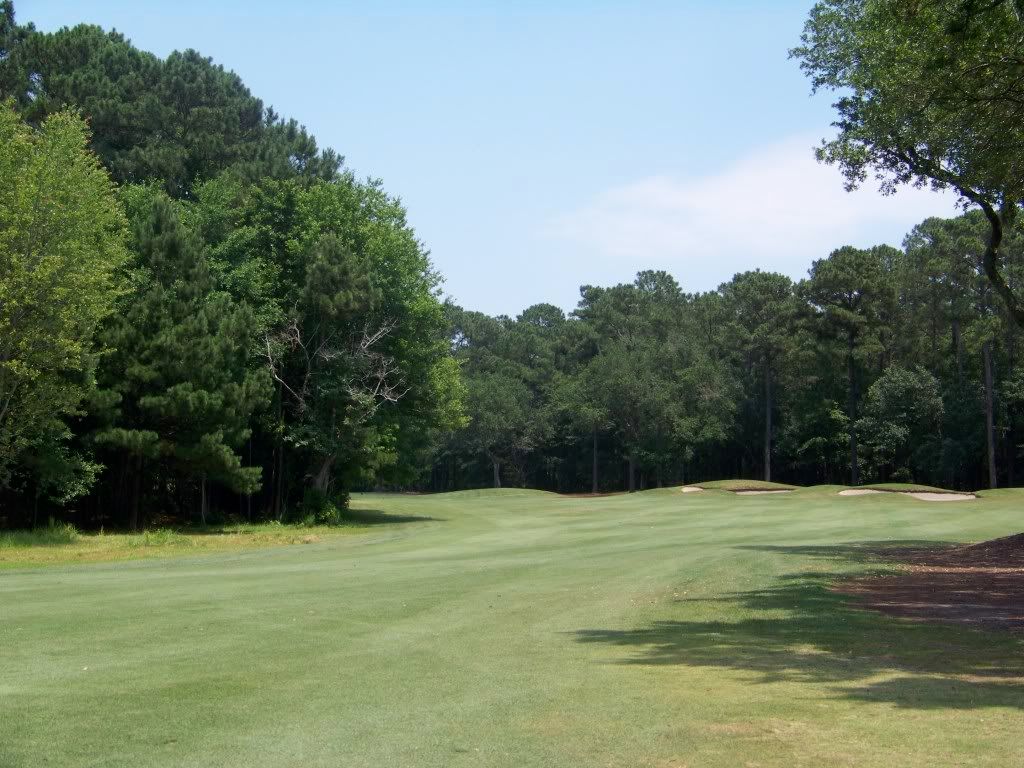
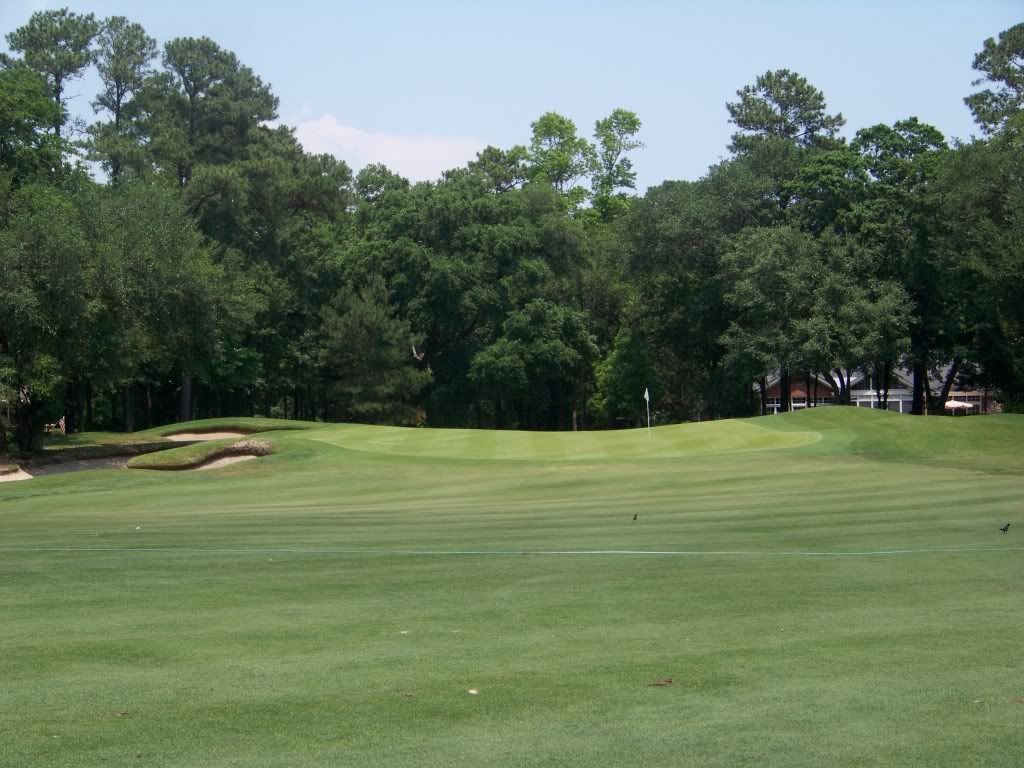
11 is a tricky par 3 that slopes away in the back, making it exceedingly difficult to be sure of where the pin is.
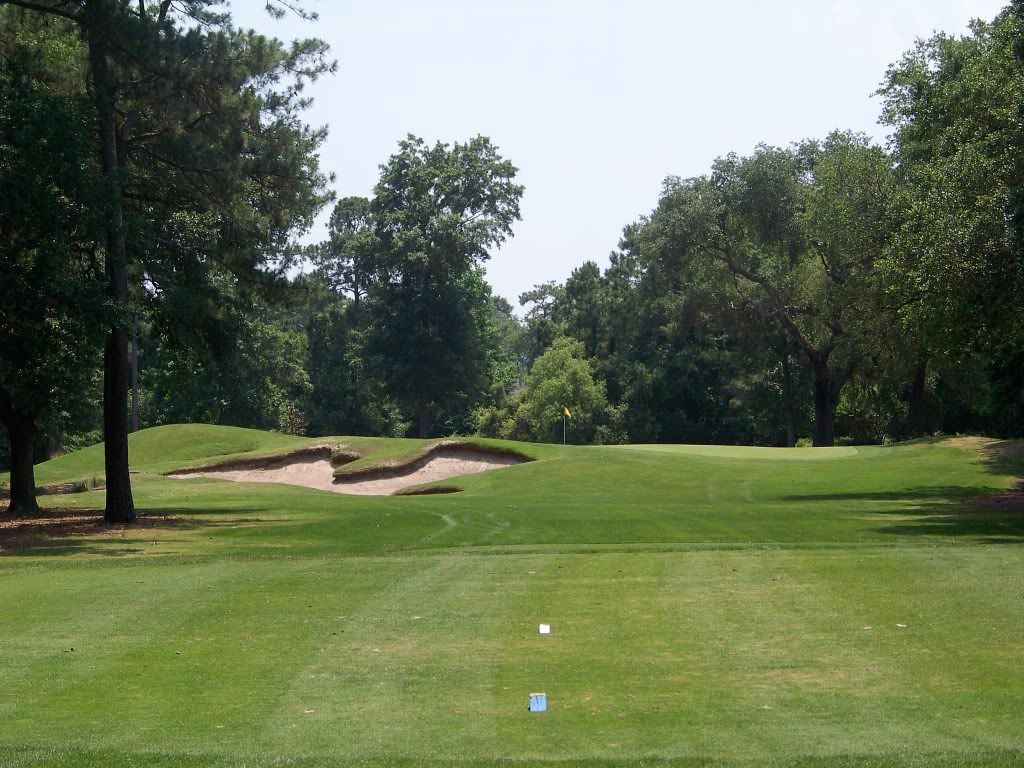
12 is one of my favorite holes at Heritage. It's a short par 4 with a green unlike any I've seen. It is one of those three-in-one greens where the high part is at the front. The left-hand section sits about a foot and a half down, and the back is about three feet below the front. Also, water lurks behind the green. I was a little disappointed to be playing to the front pin, which is the most ordinary. I wish I had had time to take more pictures of the green, but there was a group that sort of jumped in behind me.

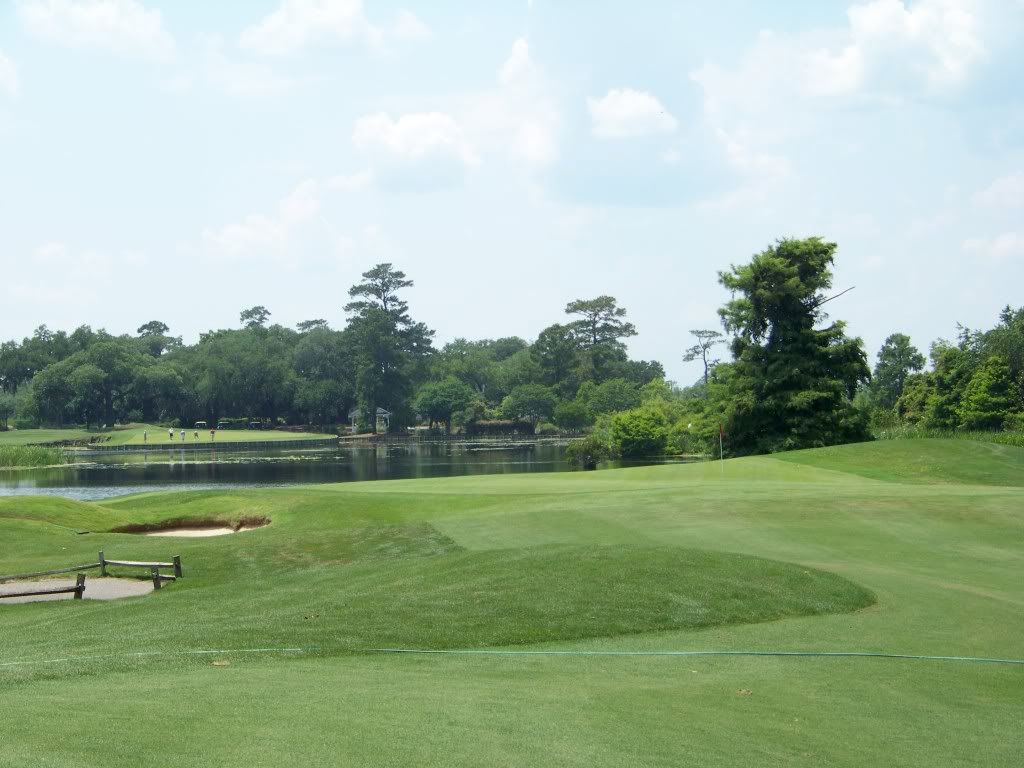
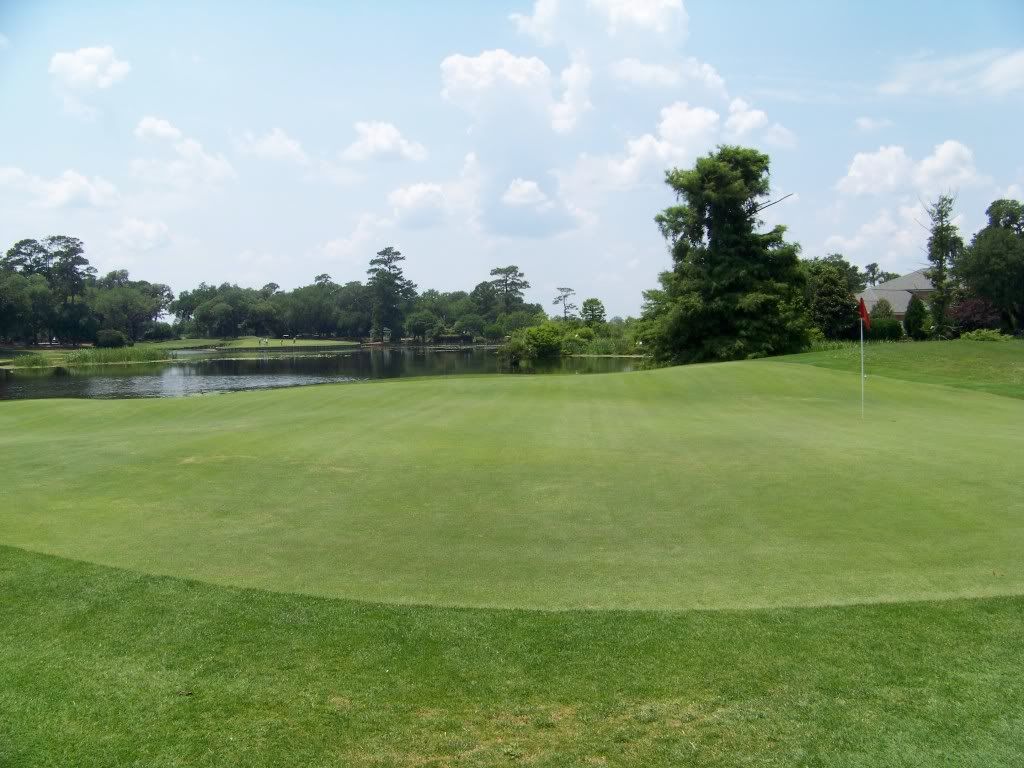
The 13th is a fantastic par 3 that plays 228 yards from the tips. It's almost all carry to a green that runs about 60 yards from front-left to back-right. It's almost an inverted Biarritz, with the front and back halves separated by a pretty big mound.
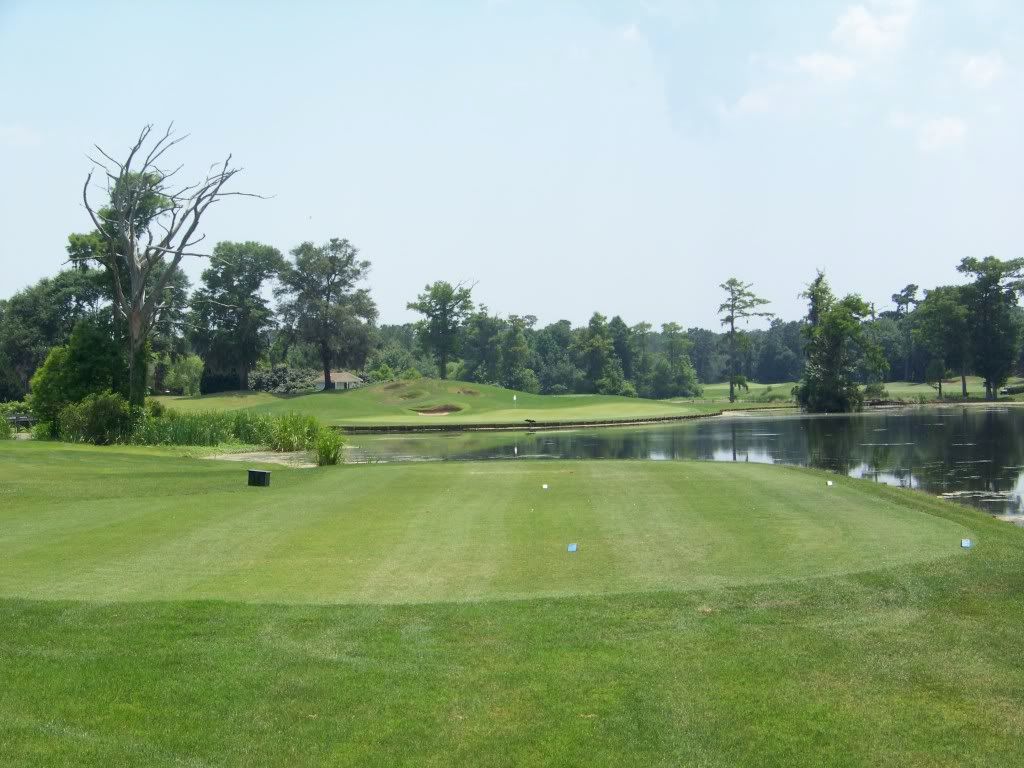
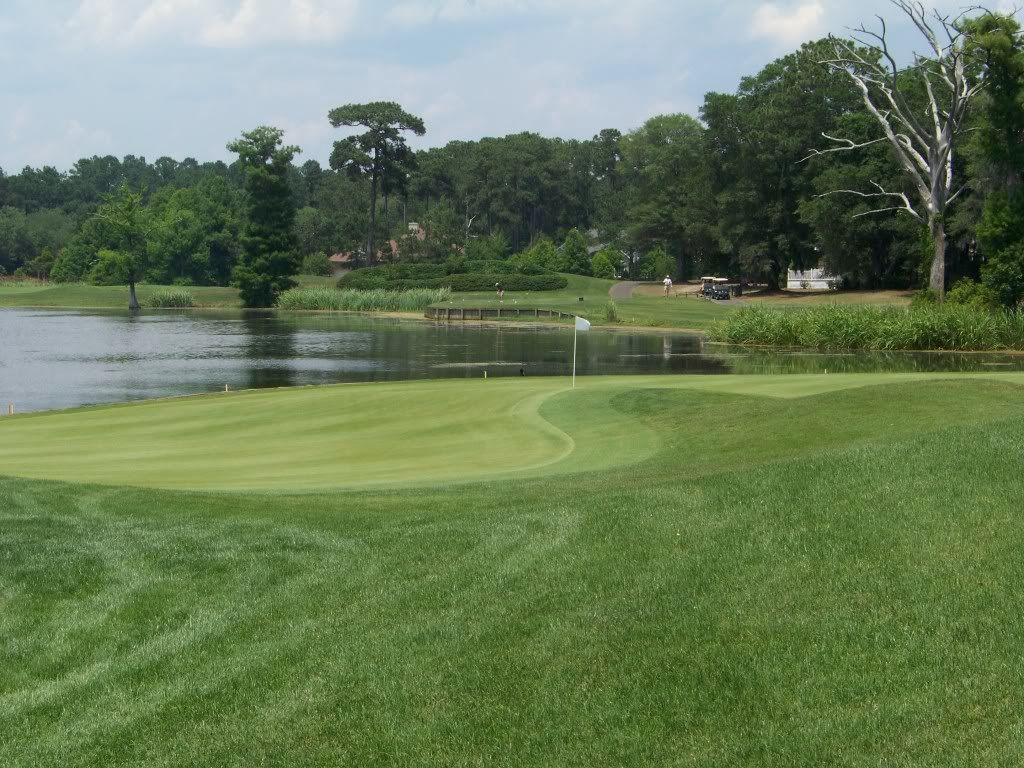
Number 14 can make a player foolish for trying to carry too much of the lake on the left off the tee. The green is a massive two-tiered affair guarded by some of the nastier bunkers at Heritage.


The 15th is the longest par 4 on the golf course and is pretty forgiving off the tee as a result. The entrance to the green is fairly open, and on days of relatively dry conditions it may be possible to bounce one up to a front pin. Middle and rear hole locations are the toughest.
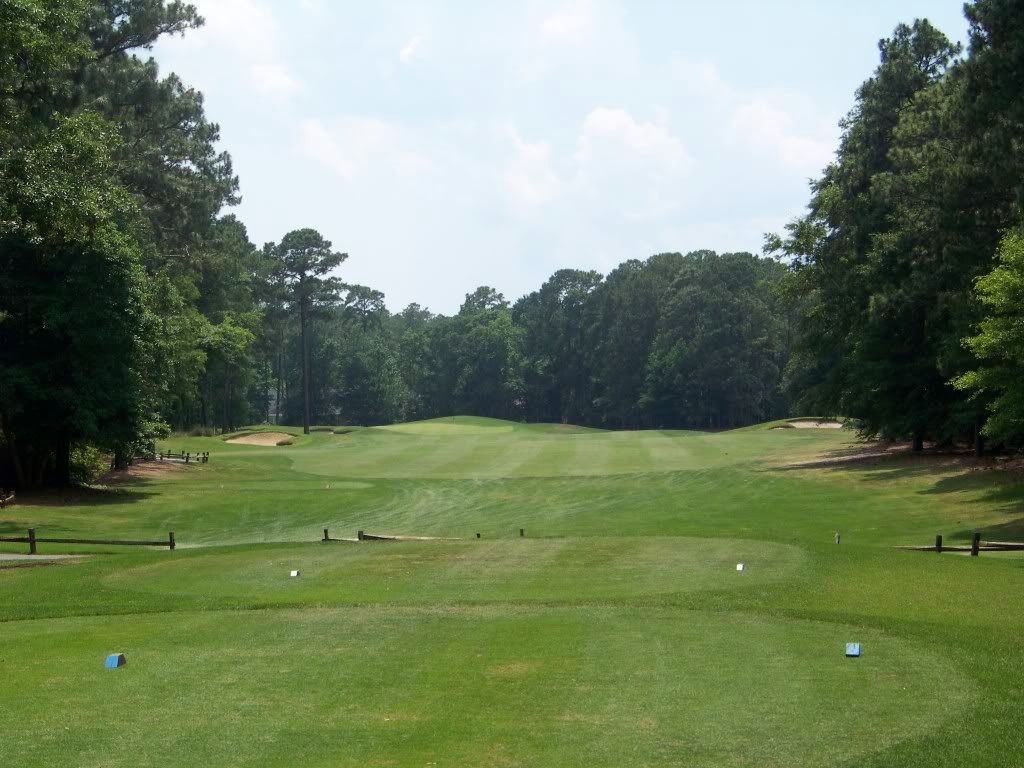
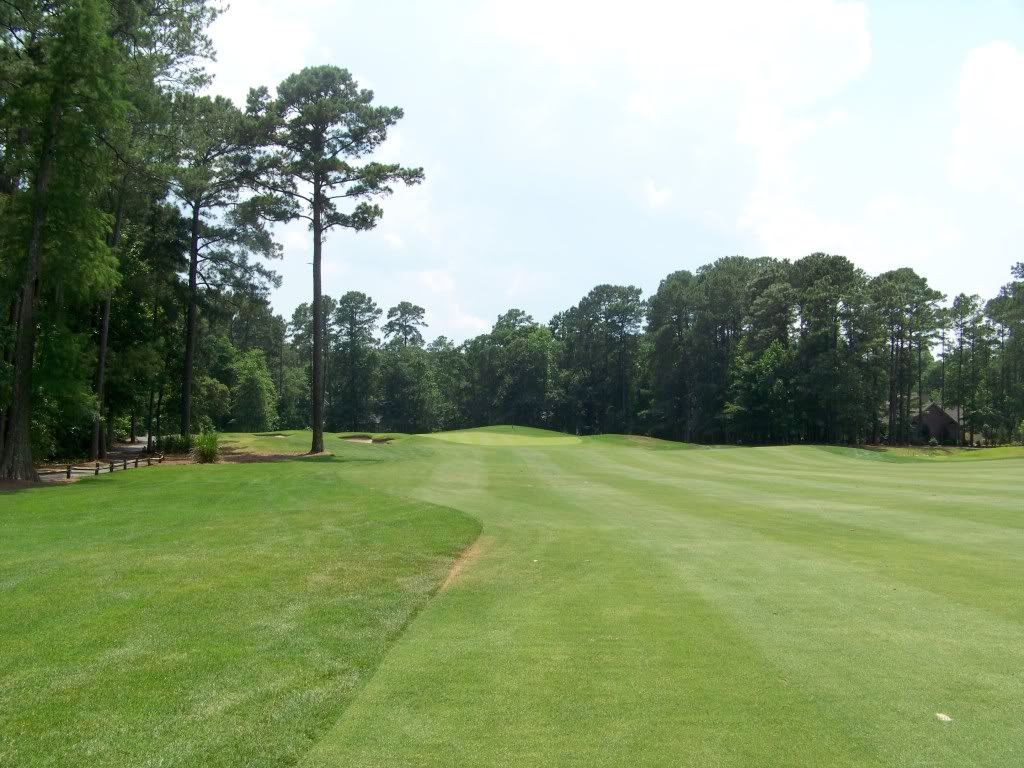
16 is a little funky, with a little stand of trees obscuring the view of the green from the left half of the fairway. It has one of the more wavy greens, making hitting the correct part of the fairway very important.
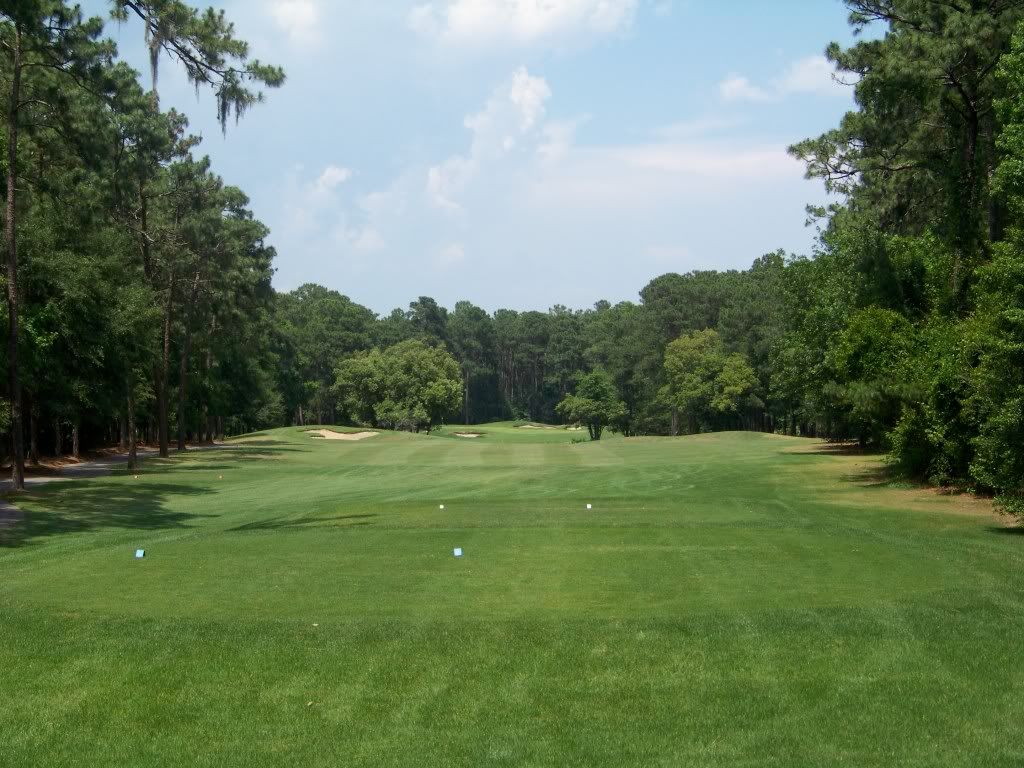
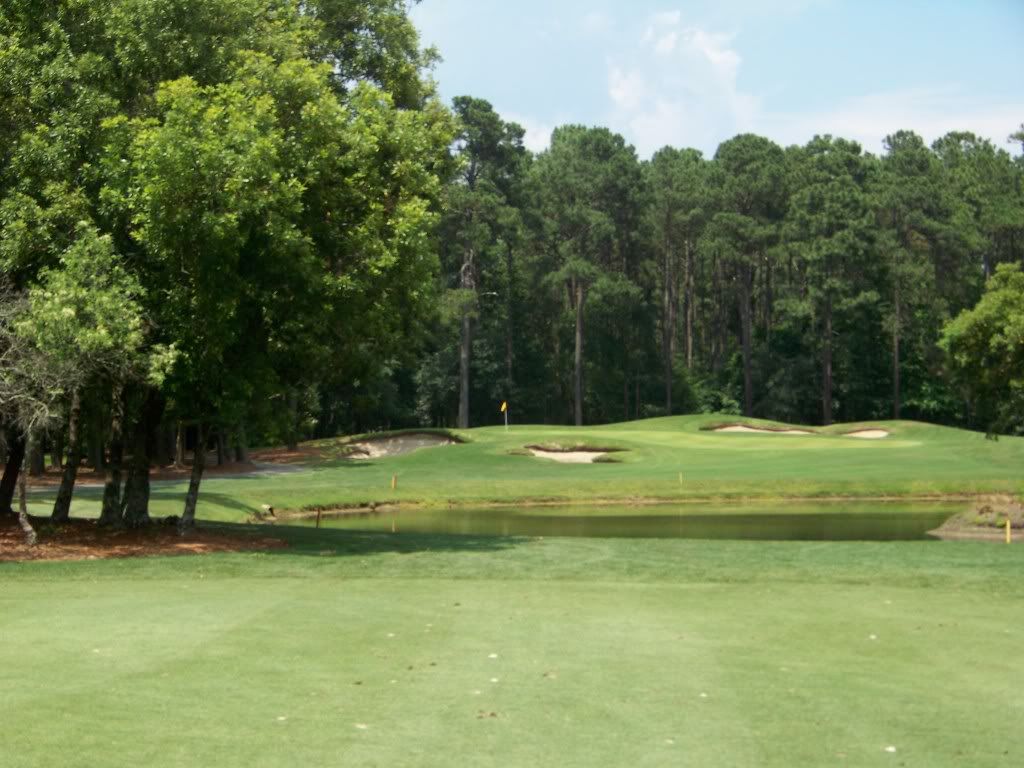
The 17th is a very tight, long dogleg right par four, probably the toughest of the two-shotters. The approach must contend with some beautiful trees and will test the player's ability to hit a draw or a fade.
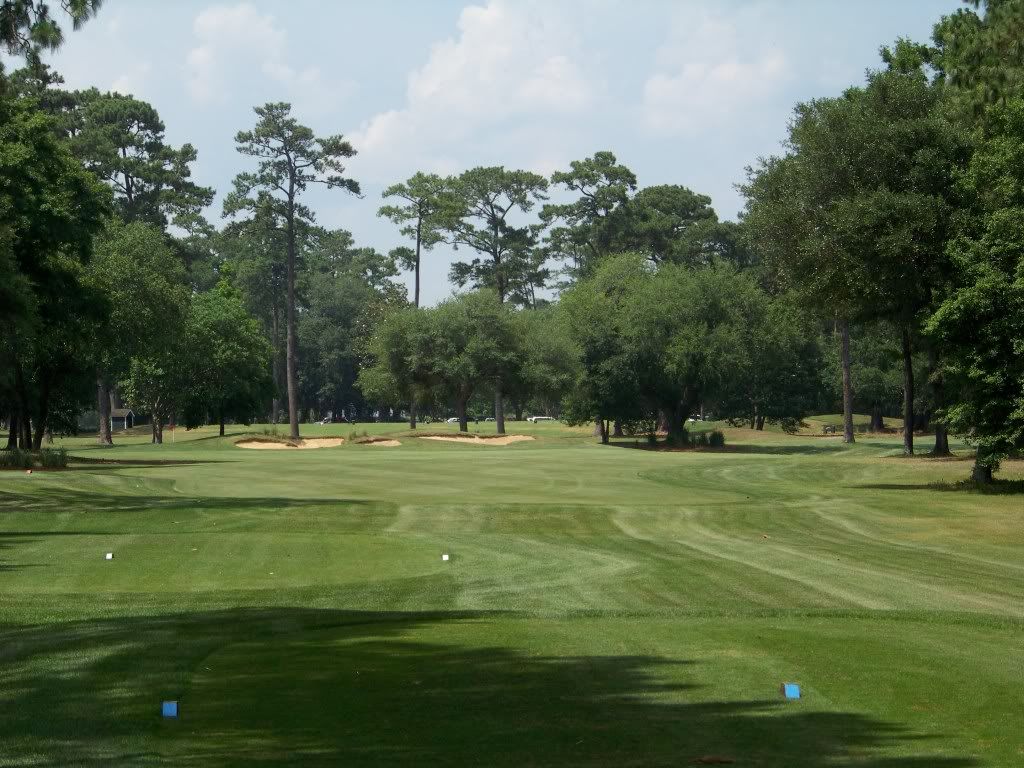
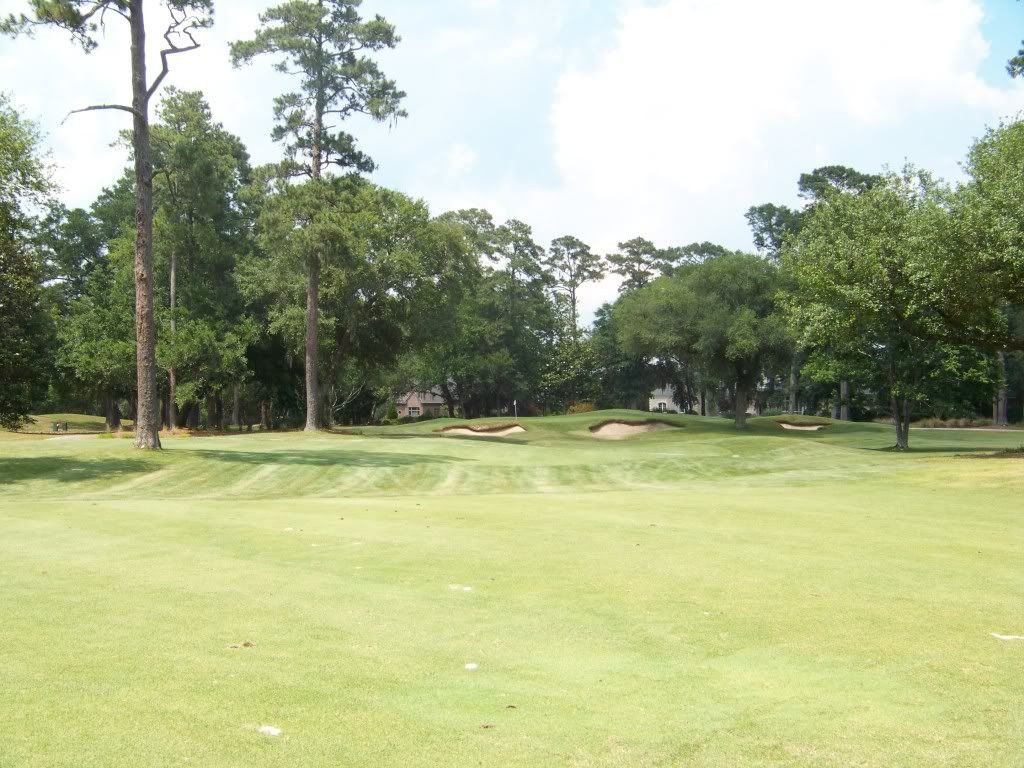
The last hole at Heritage gets the most press and advertising shots. It's a reachable par 5 with a semi-peninsula green. The aggressive play off the tee is over the trees on the left, potentially leaving 220 yards or less into the green. A great finishing hole for match play.
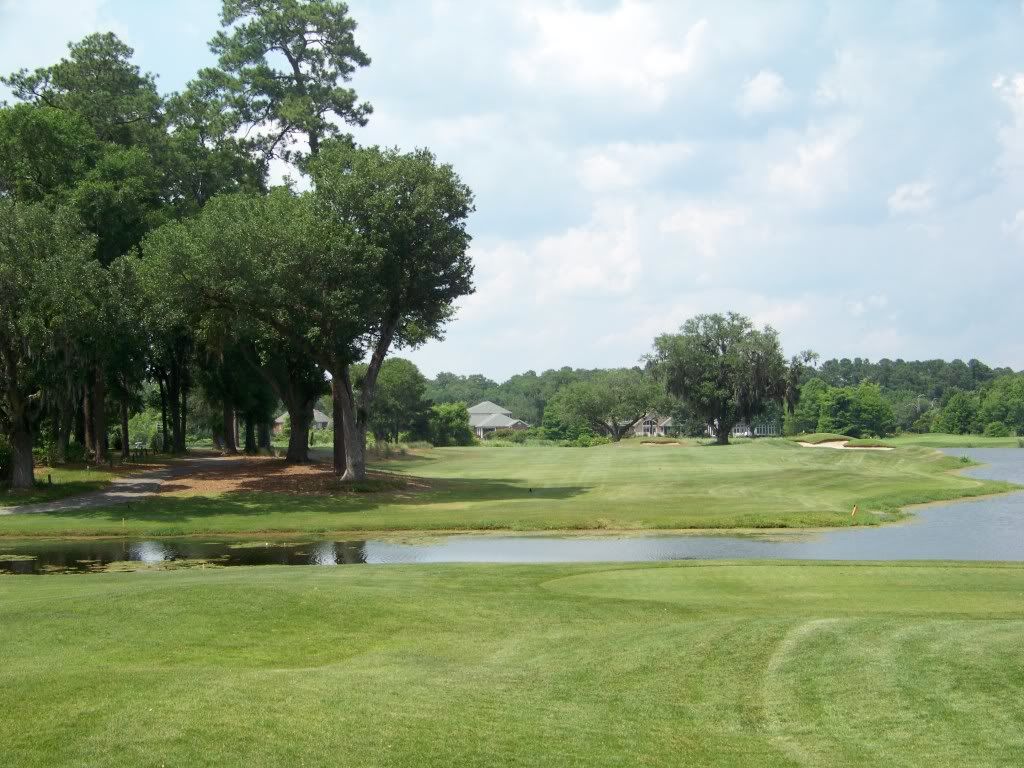
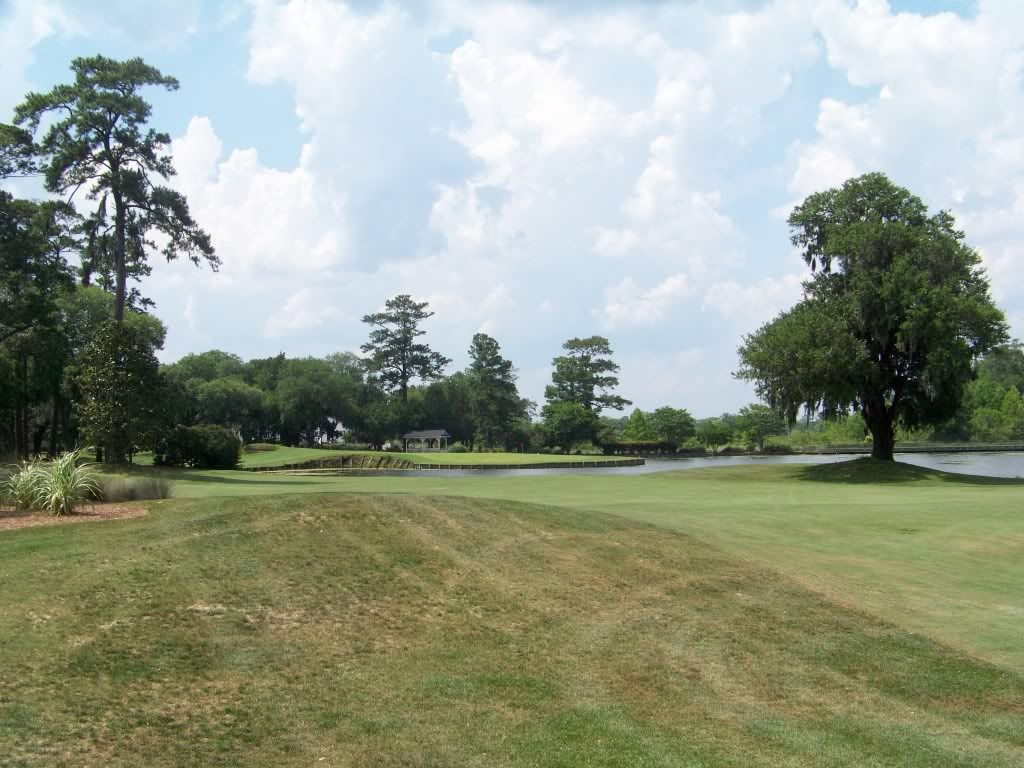
Heritage is one of the most visually appealing golf courses I've played, with rumpled greens and nasty bunkers. It can be had by someone who hits a lot of fairways, as it is pretty easy to hit a high number of greens in regulation. Golf Digest has it at #46 Public, with Caledonia and True Blue at #s 86 and 87, respectively. I don't think it holds a candle to Caledonia, but I could entertain arguments for it being slightly ahead of True Blue, though I might not agree. Nonetheless, it is a very enjoyable golf course if you can appreciate the strategic potential of a few trees.

Cheers.